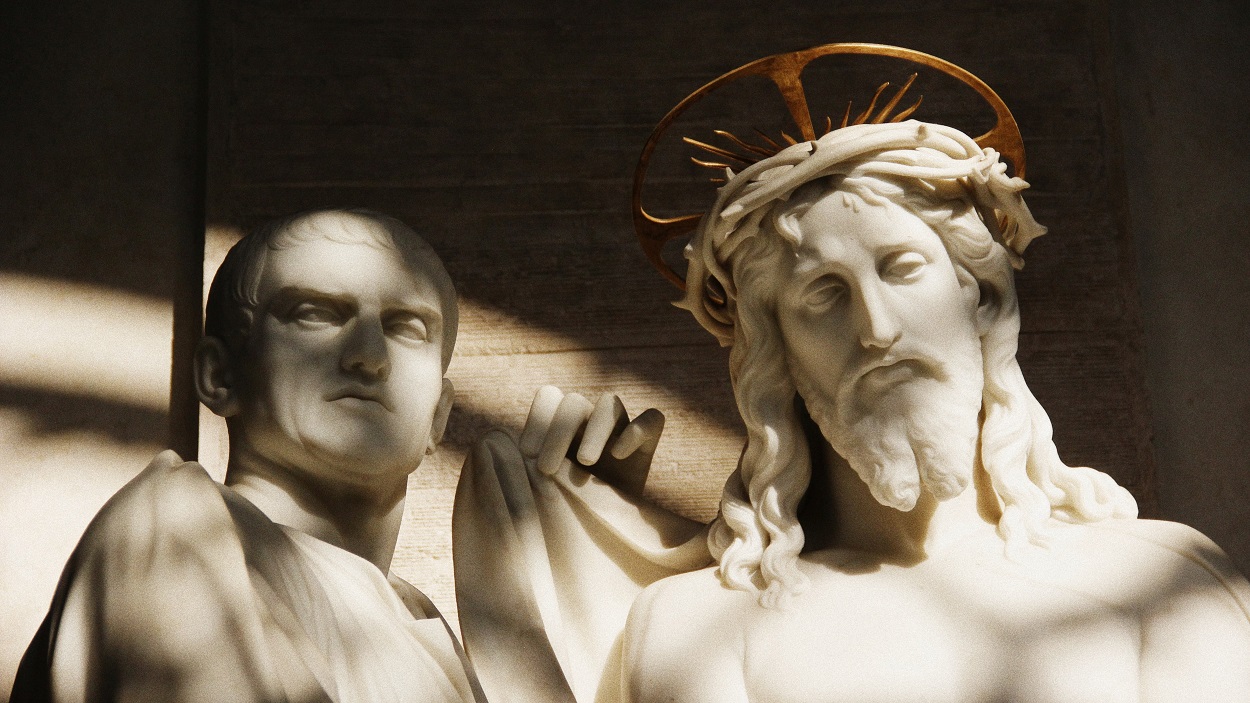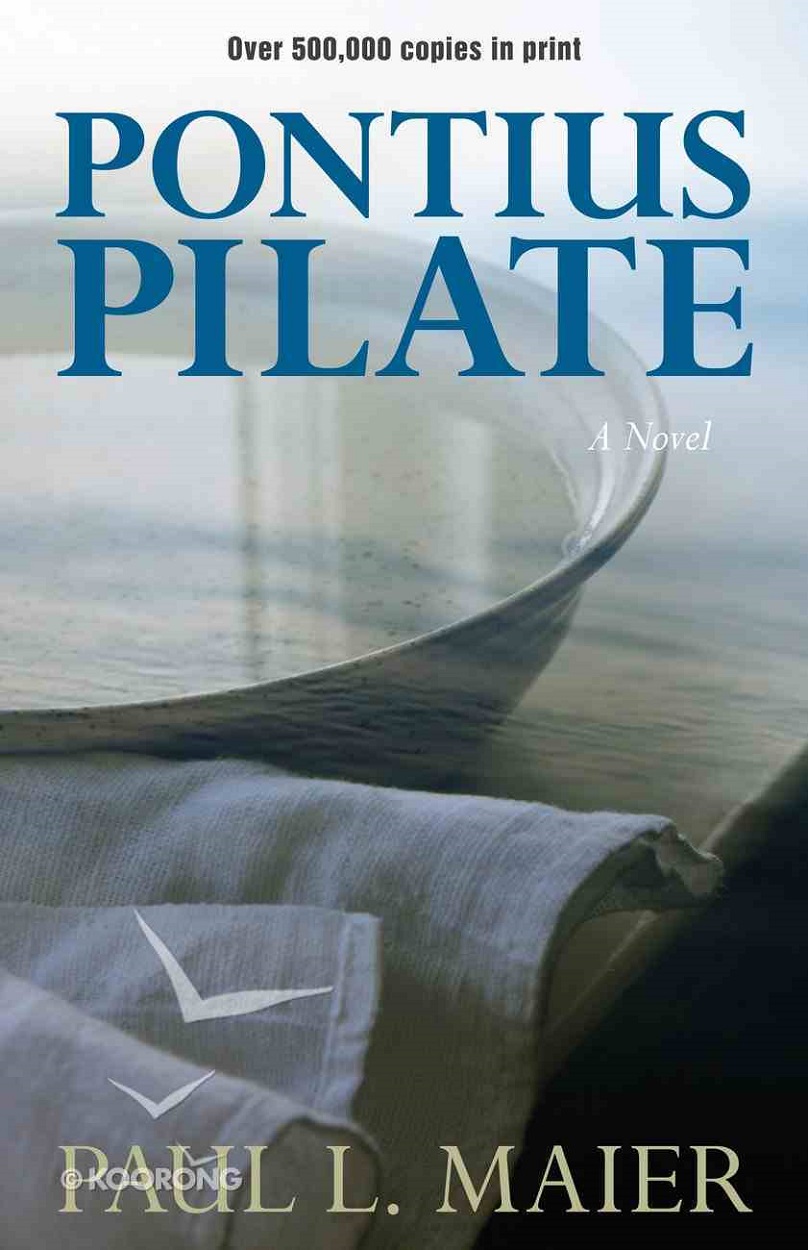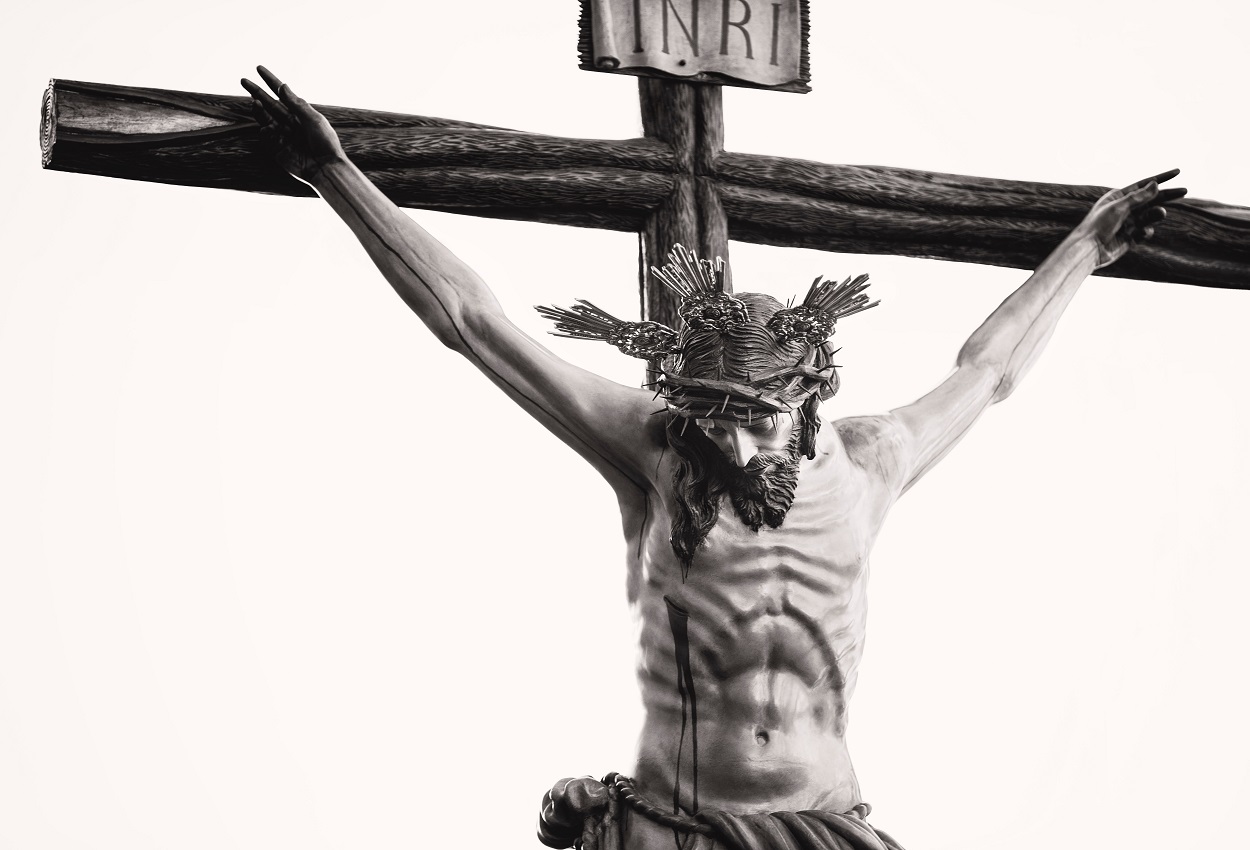Reflections on Pontius Pilate
April 11, 2022

Paul Maier has the gift of making ancient history come alive in his 1968 novel, Pontius Pilate. Maier, who was Professor of Ancient History at Western Michigan University, provides captivating insights into the cross-currents of political, religious and cultural life during the days of Jesus.
Seen through the eyes of a loyal Prefect sent there by Rome to govern, the geographical details, including sea and land transport systems, cities of Alexandria in Egypt, Caesarea Maritima, and Jerusalem are complete with colours and smells to titillate our imagination. Archeological confirmation of coins, temple balustrade stone (excluding gentiles from the inner court of sanctuary precinct), aqueduct, Ezekiel’s tunnel, among many others, lend persuasive effect for the historicity in this narrative.
 I appreciate Maier’s graphic depiction of New Testament settings starting with Emporer Tiberius, particularly the detailed power structure and dynamics of the Roman Empire, the tension between military-might base of Caesars and senatorial republicans, and the challenge of control in governing the complexities of competing religious worldviews – primarily Pagan Rome versus Judaism.
I appreciate Maier’s graphic depiction of New Testament settings starting with Emporer Tiberius, particularly the detailed power structure and dynamics of the Roman Empire, the tension between military-might base of Caesars and senatorial republicans, and the challenge of control in governing the complexities of competing religious worldviews – primarily Pagan Rome versus Judaism.
Even the complexity in 1st Century Judaism itself is an awkward coexistence between factions of Pharisees, Sadducees, Essences, Zealots, Samaritans and the semi-Jewish Herodian Tetrarchy. It is a sweet reminiscence of my first year at seminary when I first understood clearly why the character of Jesus, who had to carefully but courageously negotiate this tricky labyrinth of human contradictions, was worth falling in love with.
Ancient Political Science, Timeless Human Dilemmas
The way Pilate walks this ‘tightrope’, balancing diplomatic tact with tolerance and disciplined firmness pulls at our sympathy towards a family man who gets bounced around between Rome, Caesarea and Jerusalem, with vulnerabilities that Maier creatively exploits to maximum effect.
The more familiar storyline of Yeshua (Jesus) the Nazarene is given a far more subtle and secondary role here than most treatments of Jesus’ life and teachings, but nonetheless Jesus finds all the more significant historical and cultural relevance within the framework of Maier’s depiction of characters and events around the second temple economy and Judaism.
Throughout dynamic story, Maier illustrates how the letter of the law kills but the Spirit (through and in Jesus Christ, the healer of diseased, disabled, resurrecting Lazarus) brings life. The Sanhedrin’s intransigence in legalistic interpretation of Mosaic laws, particularly against idolatry (such Roman insignias, war shields, Caligula’s planned ‘abomination’ idol in the temple) provides a driving undercurrent to a narrative rich with dramatic confrontations, moral and ethical dilemmas, and hazard-fraught political maneuverings. Experienced zealous Jewish crowds, having mastered the art of asymmetric warfare against their heavily armed conquering overlords, provide recurring waves of crises for Pontius Pilate.
Ambiguity in Tiberius’ expectations of how his outpost Prefect deals with Judean insurrections adds further precariousness to Pilate’s position. However, I must say, Maier gives much more insight than Synoptic Gospel writers provide to the legal skills involved in contests of wits with the Senhedrin as accusatores, over the forum delicti/domicilii, maiestas, jus gladii, (chapter 18) where the boundaries between Jewish and empire-political jurisprudence makes riveting reading.
I was somewhat transfixed by the new light this treatment of Roman forensic procedures casts on the innocently calm Messiah’s words, “the one who handed me over to you is guilty of a greater sin.” (John 19:11). But I also found the poignant reference to Plato’s “the innocent man” (chapter 19) startlingly profound, and the comical portrayal of the mad Caligula (chapter 24) highly entertaining (but maybe I shouldn’t have).

(Credit: Alem Sanchez)
Cosmic Crimes and Reconciliations
Beyond the conventional set of facts around the life, death, resurrection of Jesus, and furthermore, the witness of His rational and upstanding followers (that provide chapters of content in Christian apologetics books), Maier features, but does not develop fully, the theme of cosmic conflict in the events around Jesus’ crucifixion on Golgotha. The retelling of the gospel narratives addresses hearers from romantic, superstitious stages of faith development to higher universal, moral principles. They do include omens in the skies, as Maier exploits the astrology and astronomical references of the three maggis to feature “Thrasyllus of Rhodes… court astrologer” (chapter 3).
But the author also positions Pilate as an agent in a cosmic, universe-wide dimension of salvation history. God had used the bumbling Prefect to fulfill His grand purpose.
When Pilate said to Cornelius, “Then why didn’t your god burn me with a thunderbolt the moment I condemned his son to the cross?… A cosmic crime!” Cornelius replied, “…it happened by a higher design according to which both Jews and gentiles were to be responsible for … this sacrifice. Just as all classes joined in condemning the Christos, so, by divine reflex, his death and resurrection atoned for all classes, all races. You then took part in making the faith universal…” (chapter 26).
I would like to see Maier fuse these two cosmic themes together to also explore further another multi-dimensional layer of the gospel where the Cross of Christ “must be seen by angels” for assurance in God’s omnipotence and sovereignty in solving the problem of sin and evil in the universe.
A Serious First Look into the Tomb
Those of us who still choose city life, not yet “fleeing to the hills”, may wish to take our service seriously to witness for Christ among the throngs of urbanized secular-minded populace. You may find Maier’s Pontius Pilate helpful to engage the minds of skeptics. Indeed, the main character in this narrative, Pontius himself, is cast as one who rejects the supernatural, miracles, and therefore the resurrection of Jesus. But Maier skilfully weaves history, archeology and New Testament narratives to invite the skeptic to peer into the empty tomb of Jesus to confront the facts testified by a multitude of credible witnesses, a thousand plus manuscripts, the embarrassing riches of extra-biblical writings, and increasing numbers of significant archeological evidences, all supporting the historicity of the Sacred Text in a compelling tide of reasoning.
Not everyone is immediately ready for the vastly more voluminous Desire of Ages and its 19th Century linguistic style. But Maier’s Pontius Pilate is potentially a door-opener for 21st Century minds and questions to find answers given way back in the 1st Century when God took on human flesh and tabernacled among humankind. And then, give them The Desire of Ages, or best of all, the Gospel narratives by Matthew, Mark, Luke and John, as loving follow up service.
Victor Lee is a facilitator for Ministry4Thinking, who studied Theology at Avondale University (Australia), Political Science at Flinders University (Singapore Campus), and works in the new rubric of Agroecological Epigenetics developed at Cornell International Institute for Food, Agriculture and Development (CIIFAD). He was born in Indonesia, grew up in Sydney, and has made Borneo his home for the past ten years.











